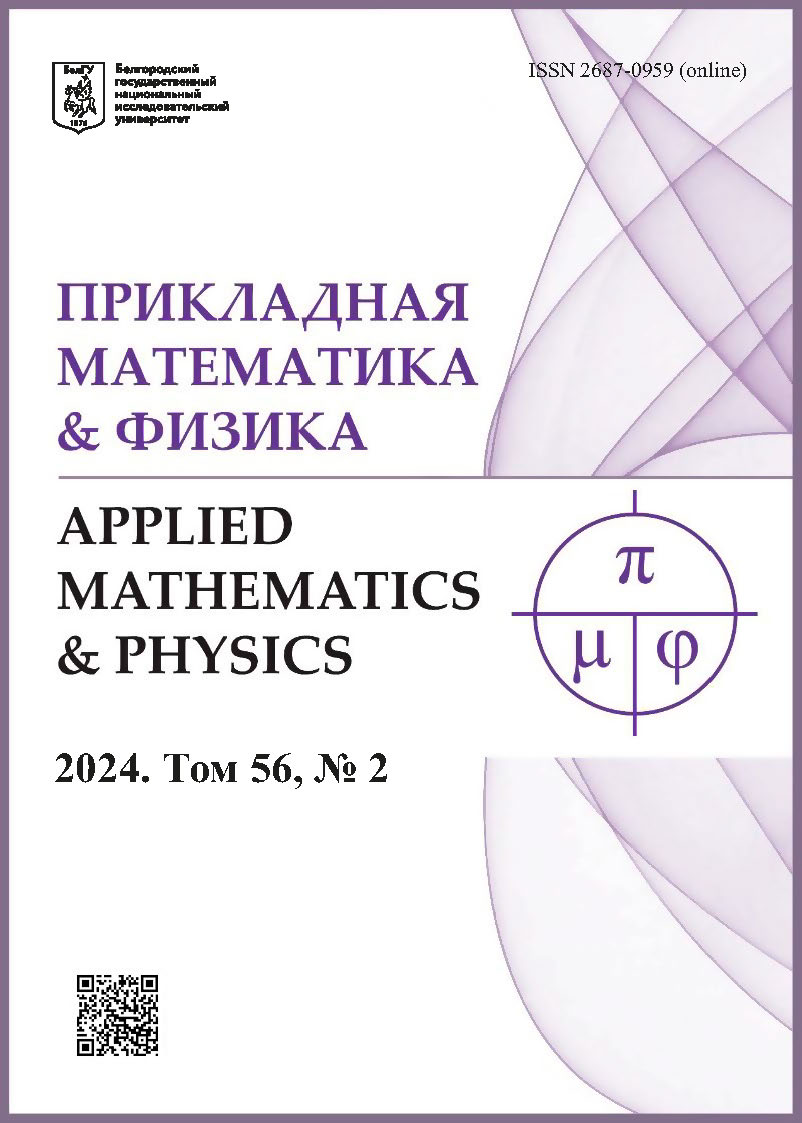Analysis of the Microstructure and Properties of Dissimilar FSW Joints of Heat-treatable Aluminium Alloys
DOI:
https://doi.org/10.52575/2687-0959-2024-56-2-146-152Keywords:
Relativistic Electrons, Diffracted Transition Radiation, Indication of Electron Beam DivergenceAbstract
The diffracted transition radiation (DTR) produced by a beam of relativistic electrons traversing a thin single-crystal plate in the Laue scattering geometry is considered. We have obtained the expression describing the angular density of the DTR for the case when the path length of the electron in the target is far less than the extinction length of X-rays in the crystal. It is shown that in this case the considered DTR process has the explicit kinematic character. The numerical calculations of the yield of DTR photons in the direction of Bragg scattering performed for various values of the registration solid angle show a significant influence of the electron beam divergence on the photon yield. We have arrived at a conclusion that the measured photon output of DTR radiation emitted in a given solid angle can be used for indication of the electron beam divergence. The model calculations of the electron beam divergence parameters on the base of “measured” yield of DTR photons traversing through a slit collimator are carried out. The results of the calculation show that the proposed in this work formula can be successfully used as a base for the development of methods for measuring the divergence of beams of relativistic ultrahigh-energy electrons based on DTR angular distribution.
Acknowledgements
This work was supported by intra-university “BelSU” grant “Young leaders in science” as part of the project “Science of the 21st century” of the program "Priority-2030".
Downloads
References
Threadgill PL, Leonard AJ, Shercliff HR, Withers PJ. Friction stir welding of aluminum alloys. International Materials Reviews. 2009;54:49–93.
Mishra RS, Ma ZY. Friction stir welding and processing. Materials Science and Engineering R: Reports. 2005;50(1-2):1–78.
Meng X, Huang Y, Cao J, Shen J, dos Santos JF. Recent progress on control strategies for inherent issues in friction stir welding. Progress in Materials Science. 2021;115:100706.
Heidarzadeh A, Mironov S, Kaibyshev R, Сam G, Simar A, Gerlich A, Khodabakhshi F, Mostafaei A, Field DP, Robson JD, Deschamps A, Withers PJ. Friction stir welding/processing of metals and alloys: A comprehensive review on microstructural evolution. Progress in Materials Science. 2020;117:100752.
Mishin V, Shishov I, Kalinenko A, Vysotskii I, Zuiko I, Malopheyev S, Mironov S, Kaibyshev R. Numerical Simulation of the Thermo-Mechanical Behavior of 6061 Aluminum Alloy during Friction-Stir Welding. Journal of Manufacturing and Materials Processing. 2022;6:68.
Cavaliere P, Nobile R, Panella FW, Squillace A. Mechanical and Microstructural Behavior of 2024-7075 Aluminium Ally Sheets Joined by Friction Stir Welding. International Journal of Machine Tools and Manufacture. 2006; 46:588-594
Li Y, Murr LE, McClure JC. Solid State Flow Visualization in the Friction Stir Welding of 2024 Al to 6061 Al. Scripta Materialia. 1999;40:1041-1046.
Scialpi A, Giorgi M, Filippis LAC, Nobile R, Panella FW. Mechanical Analysis of Ultra-Thin Friction Srir Welding Joined Sheets with Dissimilar and Similar Materials. Materials & Design, 2008. 29:928-936.
Moradi MM, Aval HJ, Jamaati R, Amirkhanlou S, Ji S. Microstructure and Texture Evolution of Friction Stir Welded Dissimilar Aluminum Alloys: AA2024 and AA6061, Journal of Manufacturing Processes. 2018;32:1-10
Jonckheere V, Meestr B, Denquin A, Simar A. Torque, Temperature and Hardening Precipitation Evolution in Dissimilar Friction Stir Welds between 6061-T6 and 2014-T6 Aluminum Alloys. Journal of Materials Processing Technology. 2013;213:826-837.
Moradi MM, Aval HJ, Jamaati R, Amirkhanlou S, Ji S. Effect of SiC Nanoparticles on the Microstructure and Texture of Friction Stir Welded AA2024/AA6061. Materials Characterization. 2019;152:169-179.
Paidar M, Vignesh RV, Khorram A, Ojo OO , Rasoulpouraghdam A, Pustokhina I. Dissimilar Modified Friction Stir Clinching of AA2024-AA6061 Aluminum Alloys: Effects of Materials Positioning. Journal of Materials Research and Technology. 2020;9:6037-6047.
Jandaghi MR, Pouraliakbar H, Saboori A, Hong SI, Pavese M. Comparative Insight into the Interfacial Phase Evolutions during Solution Treatment of Dissimilar Friction Stir Welded AA2198-AA7475 and AA2198-AA6013 Aluminum Sheets. Materials. 2021;14:1290.
Ramamurthy M. Balasubramanian P, Senthilkumar N, Anbuchezhiyan G. Influence of Process Parameters on the Microstructure and Mechanical Properties of Friction Stir Welds of AA2014 and AA6063 Aluminium Alloys using Response Surface Methodology. Materials Research Express. 2022;9:026528.
Varunraj S, Ruban M. Investigation of the Microstructure and Mechanical Properties of AA6063 and AA7075 Dissimilar Aluminium Alloys by Friction Stir Welding Process. Materials Today: Proceedings. 2022;68:1654-1657.
Газизов МР, Зуйко ИС, Малофеев СС. EBSD-анализ микроструктуры Al-Cu-Mg сплава, подвергнутого сварке трением с перемешиванием. Прикладная математика & Физика. 2022;54(4):261-265.
Vysotskiy I, Malopheyev S, Zuiko I, Mironov S, Kaibyshev R. Crystallographic aspects of 17–4 PH martensitic steel produced by laser-powder bed fusion. Materials Characterization. 2022;192:112405.
Vysotskiy I, Malopheyev S, Zuiko I, Mironov S, Kaibyshev R. Microstructure Distribution in 17-4 PH Martensitic Steel Produced by Selective Laser Melting. Metallurgical and Materials Transactions A. 2022;53:4143-4147.
Zuiko IS, Malopheyev S, Mironov S, Betsofen S, Kaibyshev R. On the Heterogeneous Distribution of Secondary Precipitates in Friction-Stir-Welded 2519 Aluminium Alloy. Metals. 2022;12(4):671.
Zuiko IS, Mironov S, Betsofen S, Kaibyshev R. Suppression of abnormal grain growth in friction-stir welded Al–Cu–Mg alloy by lowering of welding temperature. Scripta Materialia. 2021;196:113765.
Zuiko IS, Malopheyev S, Mironov S, Kaibyshev R. Dissimilar friction stir welding of AA2519 and AA5182. Materials. 2022; 16(7): 8776.
Abstract views: 151
##submission.share##
Published
How to Cite
Issue
Section
Copyright (c) 2024 Applied Mathematics & Physics

This work is licensed under a Creative Commons Attribution 4.0 International License.





